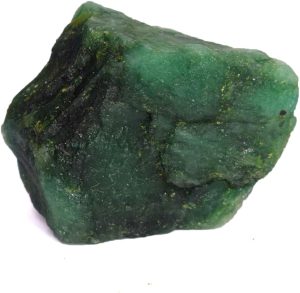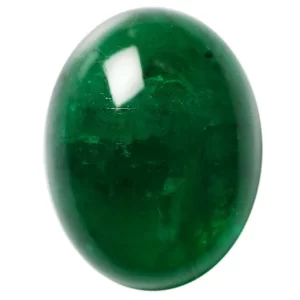
As the birthstone for May, emeralds are one of the most precious and historically significant gemstones, prized for their rich green color and rarity. They are a variety of the mineral beryl, colored green by trace amounts of chromium and sometimes vanadium. The origins of emeralds trace back thousands of years to ancient civilizations, including the Egyptians, who mined them in the Red Sea region as early as 1500 BCE. The most famous early source was the mines near Cleopatra’s palace in Egypt, and emeralds quickly became symbols of wealth and power. Throughout history, emeralds have been treasured by royalty and nobility across cultures—from the Incas and Aztecs of South America to European monarchs.

History & Lore
The lore surrounding emeralds is vast and varied. In ancient times, they were believed to possess healing powers, especially related to the eyes and mental clarity. The Greeks associated emeralds with fertility and rebirth, while in medieval Europe they were thought to protect against evil spells and bring foresight. Emeralds were often linked to the goddess Venus, symbolizing love and beauty, and were thought to enhance intuition and psychic abilities. Their vibrant green color has made them a symbol of renewal, growth, and eternal life across many cultures.

Meaning & Symbolism
Symbolically, emeralds represent wisdom, patience, and harmony. They are often associated with the heart chakra, believed to open the heart to love and compassion. In modern crystal healing, emeralds are used to promote emotional balance, physical healing, and spiritual growth. Their rarity and vivid hue continue to make them a symbol of luxury and status.
Origin & Location
Natural emeralds are found in a few key regions worldwide. The most historically significant deposits are in Colombia, which produces the majority of the world’s finest emeralds, known for their deep, vibrant green with a slight bluish tint. Other important sources include Zambia, Brazil, Zimbabwe, and Afghanistan. Each region’s emeralds have unique characteristics; for example, Zambian emeralds tend to have a slightly darker, bluish-green color and are often more included than Colombian stones. Emeralds typically form in metamorphic rocks where beryllium-rich fluids interact with chromium or vanadium-rich environments, which is why they are comparatively rare.

